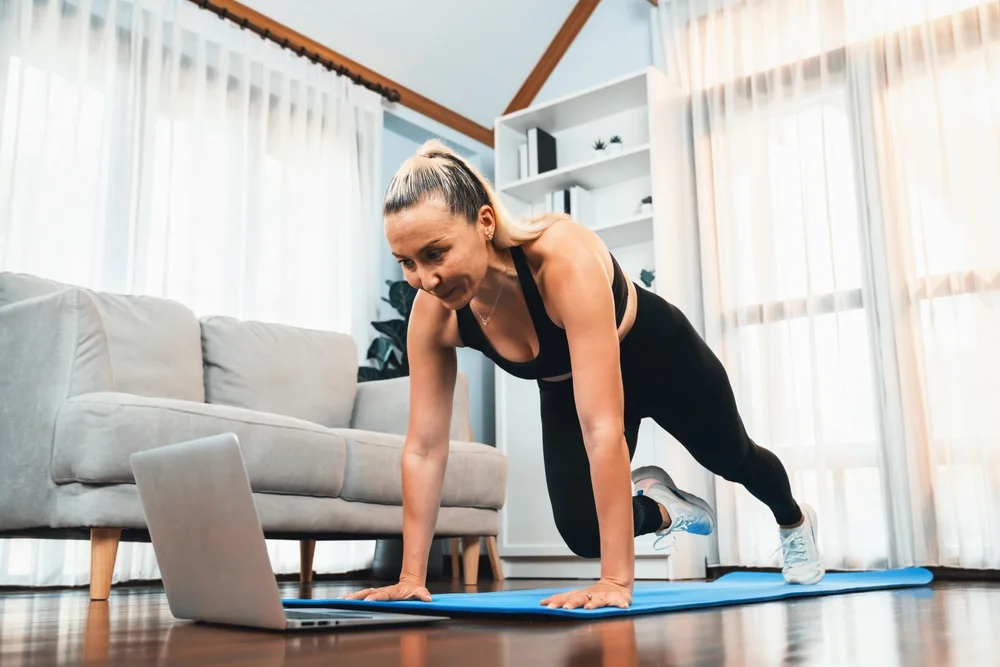Copyright thebrighterside

When you feel pain shooting through a joint midway through a squat or feel a strain in your muscle that you’re afraid will abort your workout, the difference between progress and being injured often comes down to movement, how well the body can execute a movement efficiently. Researchers at the University of California, San Diego have developed an artificial intelligence system that may help you move more safely. Their new framework, BIGE (for Biomechanics-informed GenAI for Exercise Science), produces human motion that is realistic and scientifically based. It gives a better understanding of the differentiation from the appearance of movement to the biomechanics of how the body works. BIGE can be used in fitness training, rehabilitation, and performance coaching. BIGE gives exercise science an intelligent new partner; it understands the mechanics of muscles, joints, and balance just like a coach does. Many traditional simulation tools that simulate human motion typically have complex setups and require lengthy calculations. Conversely, generative AI systems can generate motion that appears natural outside the constraints of biomechanics (the propositions regarding how muscles contract and joints move). BIGE combines the benefits of both types of approaches. It learns from human movement, while respecting biomechanics. At its core, BIGE operates by estimating hidden internal model variables in relation to joint angles. It then estimates muscle activations (for example, how much your thigh muscles should activate relative to your squat), while ensuring the movements are within a range that is realistic, as judged and determined by physical therapists or trainers. Those thresholds are informed by expert-defined rules that keep the motion safe and physically doable. "This method is going to be the future," commented Andrew McCulloch, distinguished professor of the Shu Chien-Gene Lay Department of Bioengineering at UC San Diego and one of the senior authors of the study. Movement isn't only about aesthetics, but about muscle coordination, injury prevention, and joint health over the long term. BIGE enables the computer to "learn" these subtle differences. The model has built-in metrics that evaluate how well each motion generated adheres to biomechanical constraints, including pelvic stability, knee alignment, and pattern of muscle firing behavior. When the movement is outside of these criteria, the model will adjust to get it back in line. For example, the researchers examined the activation of the thigh muscle, vastus medialis, during depth squats. By constraining that activation, the AI was able to learn how to create the deep squat movement more realistically and not the shallow-awkward motion demonstrated in the other systems. BIGE was modeled using a transformer-based neural network, which mirrors what modern language models utilize, and is a model used to read data from joint movements and how muscles will respond to that data. The final product of the digital athlete was able to perform motions not only fluidly but also physiologically based on each movement generated. To train BIGE, researchers collected motion and recording data from a motion capture system, had subjects perform single-leg depth squats. They split up each movement cycle into solid time frames so the AI could learn the patterns from beginning to end, when the knees bent, when the hips shifted, and as the body rose again. Each repetition added a new understanding of the way real human movement happens. BIGE was compared to existing motion-generating systems such as MDM and T2M-GPT, showing it outperformed other systems in every benchmark. While the older models created unpredictable hip motion and body alignment, BIGE allowed for a smoother, deeper squat, producing motion curves that matched real human data. "The methodology could be used by anyone," said senior author Rose Yu, who is a professor in UC San Diego's Department of Computer Science and Engineering. She added that beyond athletic performance, the same technology could be used for assessing fall risks among older adults or help design modified rehabilitation programs. The implications extend well beyond sports. By blending biomechanics and AI, the researchers are hopeful to create personalized digital models tailored to an individual's body type, injury history, and fitness goals. A physical therapist could someday use a model to demonstrate safe post-surgery exercises, while an older adult could use it to regain balance and reduce fall risk. BIGE's platform allows for "reverse optimization", meaning it can work backward from a desired outcome (improving knee stability, for example) to generate movement patterns that meet the desired outcomes. This could be an important tool for athletic trainers, sports scientists, and clinicians. Still, the researchers have some challenges ahead of them. Right now, the research is focused on squats; the researchers would like to expand the studies to more complex exercises, such as lunges, deadlifts, or push-ups. It will take time to make it available for gyms, clinics, and fitness apps to use. They also acknowledged the computational costs, but even that is already faster and more efficient than existing physics-based models. In a way, BIGE rethinks what it means for a computer to understand the body. Movement happens not simply through moving body parts; it can be seen through coordination, balance, and muscle contractions happening at exactly the right time. Once AI begins modeling those internal mechanics, it is not a simple simulation of movement; it is starting to learn what it is to move like a human. For anyone recovering from an injury or seeking to hone their technique, the potential in this technology feels so personal. It can mean a safe workout, faster recovery, and more confidence that each movement your body is making is based on science, not just effort. This research could radically transform how people train, recover, and maintain their mobility. Trainers could use BIGE to develop a safer training routine that could be customized to each athlete's muscle capacity or joint limits. Physical therapists could use it to inform customized rehabilitation exercises to regain strength without putting an athlete at risk for reinjury. For older adults, the technology could assess and predict fall risks through balance and coordination modeling that is efficient and unique to each case. As the system becomes more sophisticated, fitness apps might be able to integrate the platform to support real-time AI-supported feedback and bridge the gap between scientific accuracy and personal care. Research findings are available online at BIGE : Biomechanics-informed GenAI for Exercise Science. Like these kind of feel good stories? Get The Brighter Side of News' newsletter.



